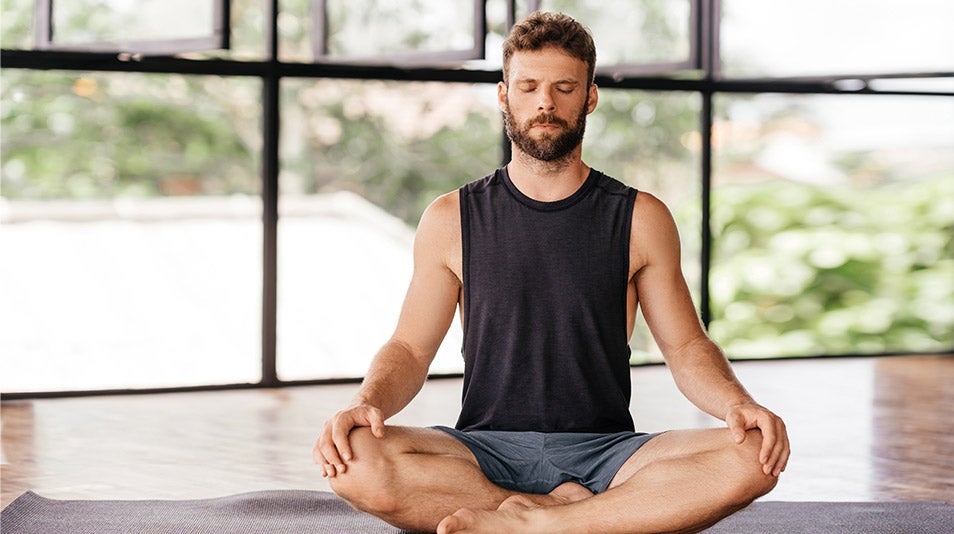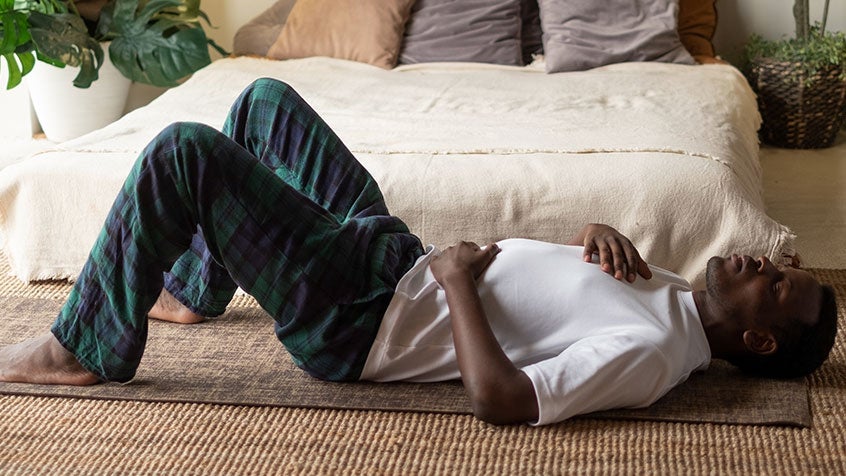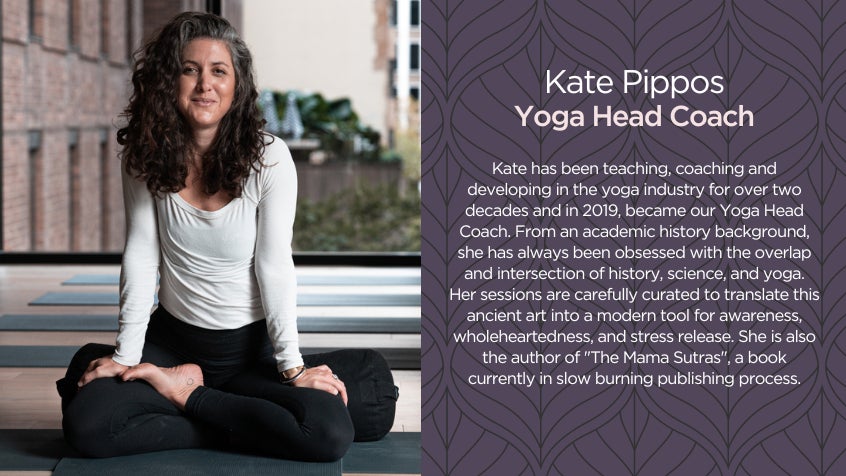Breathing techniques for stress relief
by Kate Pippos on Sunday 06 August 2023
5 min read
Stress: that thing that exists in the corners of bodies and minds like an elephant that has taken up permanent residence. While a simple notion, stress is the body’s response to physical, mental, or emotional pressure. This pressure could be anything that throws you out of your normal capacity to maintain and regulate a sense of balance. Acute stress – think public speaking, almost having a car accident, preparing to quit your job, or relationship (or maybe both) are examples of this. Acute stress can manifest as shallow breathing, sleeplessness, restlessness, chest tightness, and abdominal pains. These symptoms can last for a few minutes, hours or even days in a timespan that usually feels like years. Unaccommodated acute stress can lead to chronic stress.
The mind behind stress
Chronic stress results from repeated exposure to situations that lead to the release of stress hormones. It causes our stress response system, or sympathetic nervous system to activate – something which can be perpetually and unfortunately for us, turned on. The sympathetic nervous system was once a reliable source of keeping us safe; think, being chased by a bear. These days though, the nervous system lacks the ability to discern whether we’re being chased by a bear, or our boss. Chronic stress inflames the body system and can lead to a bevy of other health conditions that can have longer lasting effects including both mental and physical illness.
A positive spin on stress
On the plus side, stress has its benefits, too. We know that stress is necessary for the evolution of humans, as it forces adaptation. It can also enable us to establish healthy boundaries and moderating stress levels can boost brain function by strengthening the connection between neurons. In simple terms, we often work better under stress. We also know that moderate stress can increase immune system function with low doses of our stress hormones helping to stave off infection. And need I say more to a world that has survived a pandemic, but stress initiates in us the capacity for resilience.
Managing stress through breathwork
The key to managing stress is to reduce the acuteness in the moment to prevent it from becoming chronic. One answer is very simple, and very accessible: breathing. Breathwork has become a bit of a buzzword lately, and I bet that if you’re a millennial, at least one of your friends has recently completed a ‘breathwork’ course and has already run you and your group of friends through an almost traumatically heaving breath session. Fear not, read on for 4 basic ways to access breath and its benefits for stress reduction without having to hyperventilate or cry.
Basic breath awareness – a practice for anywhere, anytime.
This can be done anywhere and at any time including in bed, at red lights (a great antidote for the very natural stress of city traffic), in the shower, while waiting for the kettle to boil – you get it, anywhere and at any time. Eyes open or closed, begin to notice the natural rhythm of your breath. Feel the expansive quality deep in your belly as you inhale, and the contracting of navel to spine as you exhale fully. Bring awareness and intimacy to the reality that you are breathing and that in this moment, you are consciously controlling your breath. While the breath is autonomic (functioning without your control), harnessing it with the intention of relieving stress can be incredibly transformational and is central in all breath practices.
Extend the exhale – soothing, calming, and nurturing
This breath practice can activate your parasympathetic nervous system enabling that shift from ‘flight, fight or freeze’ to a state of resting relaxation. Begin to count your breaths, first to a count of 4, enabling equal sets of breath. It doesn’t matter how quickly you breathe or count, only that they’re equal. Once you’ve found your rhythm, begin to extend your exhale to a count of 6. If 6 feels manageable, increase to 7 or maybe 8. Continue for a minimum of 5 minutes.
Box breathing – recentre and recharge
Box breathing is famed for its adoption by athletes, the military and those who experience high stress. It can help to slow your breath down as well as bring greater awareness back to the present moment. Begin with a regular count of 4 to 4 breathing and then slowly begin to add a hold at the top of each inhale and bottom of each exhale. You breathe in for a count of 4, hold for a count of 4, out for a count of 4, hold for a count of 4. Continue for a minimum of 5 minutes.
Cyclic sighing – weird but undeniably wonderful
Cyclic sighing has gained wings in recent times and is the latest fad when it comes to breathing. Importantly, the science shows that just 5 minutes of this per day is enough to increase positivity levels more than 30 minutes of mindfulness. Cycle sighing involves taking a slow breath through the nose, and a long breath out the mouth with a resounding sigh. It’s perfect on days where you work from home, or if you want your teenage kids to vacate the room.
In every Virgin Active Yoga class, we explore breath as a tool for greater awareness, less stress and increased happiness. Join us to explore energising breathing in Align and Flow classes, and relaxing hypnotic breathing in Calm.
About the author:
Related articles
Nourish
3 min read
Food mind games: how stress affects your appetite
Unwind
3 min read
Are you burnt out?
Nourish
3 min read
For wellness that lasts, ditch the trends and guilt
Enjoying our blog?
Sign up to our newsletter to get updates on training, healthy living, news and events.







